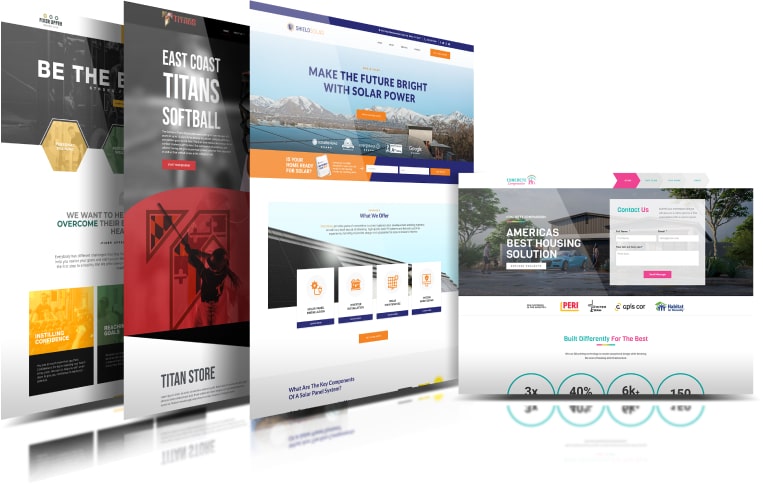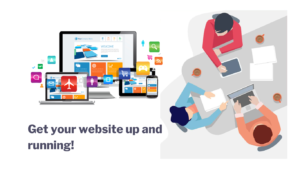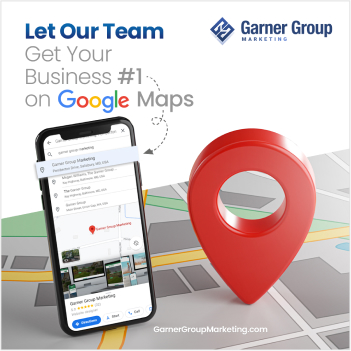When it comes to website design, there are a lot of things to consider. How do you make sure that your website is effective and appealing to users? Here are some tips on how to design a highly effective website:
Keep it simple.
Don’t try to cram too much information onto your home page – users should be able to find what they need quickly and easily. Also, use clear and concise language so that visitors don’t get lost in the text.
Make sure that your home page has a clear and concise message, and that visitors can easily find the information they need. Use clear and concise language so that readers don’t get lost in the text. Try to keep the amount of information on your home page to a minimum, so that users can find what they need quickly and easily.
Make it visually appealing.
The look and feel of your website are important – it should be easy on the eyes and reflect the tone of your business or organization. Choose colors and fonts that are pleasing to the eye, and use images and graphics sparingly (but wisely). You want your website to be easy to read and navigate, so keep things simple and organized.
And don’t forget the most important part of your website – the content! Your content should be well-written, informative, and relevant to your target audience. Be sure to proofread everything before you publish it, and update your content regularly to keep it fresh.
If you take the time to create a well-designed, informative website, you’ll be rewarded with happy visitors who will keep coming back for more.
Use navigation menus effectively.
Navigation menus are an important part of any website – they help users move around the site easily and find what they need without having to search for it. Make sure your menus are easy to understand and use, and that all-important links are included.
Your menus should be easy to understand and use, with all-important links included. This will help your users navigate your site easily and find what they need without having to search for it. Pay attention to the design of your menus, as well – a well-designed menu can make a big difference in how user-friendly your site is.
When designing your menus, keep the following in mind:
- Make sure the labels are clear and easy to understand
- Include links to all important pages on your site
- Use drop-down menus sparingly, and only when they will improve navigation
- Consider using icons or other visuals to help users understand what each menu item leads to
- Make sure the overall design of your menus is clean and easy on the eyes
Your visitors will appreciate being able to navigate your site easily, and you’ll be able to focus on other aspects of your design.
Pay attention to layout.
The layout of your website is key – everything should be placed in an order that makes sense, with no clutter or unnecessary distractions. Most importantly, ensure that your call to action is prominently displayed and easy to find. Your website should also be designed with mobile users in mind. With over 60% of web traffic now coming from mobile devices, it’s more important than ever to have a responsive design that looks great on all screen sizes.
Your website’s content is also important for both search engine optimization and user experience. Your site should be filled with keyword-rich, informative content that speaks to your target audience. And, it should be updated regularly to ensure that your site is fresh and relevant.
Finally, your website should be easy to navigate. Users should be able to find what they’re looking for quickly and easily. If they can’t, they’re likely to click away – and you don’t want that.
By following these simple tips, you can ensure that your website is designed for success.
Include social media buttons.
Social media buttons make it easy for visitors to share your content with their networks, and they can also help to build up your brand or organization’s presence online. Make sure the buttons are placed where they’re easy to find and use.
Be sure to take advantage of social media buttons! They make it easy for visitors to share your content with their networks, and they can also help to build up your brand or organization’s presence online. Be sure to place the buttons where they’re easy to find and use. Thanks for reading! I hope this was helpful.
Optimize for search engines.
Search engine optimization (SEO) is important for any website – it helps you to rank higher in search results, which can lead to more traffic and exposure for your site. Use keywords throughout your site, and make sure your titles and descriptions are effective. Promote your site through social media and get links from other websites to help improve your search engine ranking.
SEO is important for any website because it helps you rank higher in search results. Use keywords throughout your site, including in your titles and descriptions, to help improve your ranking. Promote your site through social media, and get links from other websites to help improve your search engine ranking. Keep your site’s content fresh and up-to-date to ensure that visitors will keep coming back.
You can improve your website’s SEO and attract more visitors. Remember, organic traffic is the key to success on the internet, so make sure your site is search engine friendly.
Test, test, test.
Always test your website before you launch it – check for broken links, misspellings, and other errors that could turn visitors away. Once your site is live, continue to test it regularly to ensure that everything is working as it should.
Make sure your website is mobile-friendly. More and more people are using their smartphones and other mobile devices to access the internet, and if your site isn’t optimized for these devices, you could be missing out on a lot of potential traffic.
Your website should be easy to navigate, with clear and concise menus and an intuitive design. Visitors should be able to find what they’re looking for quickly and easily, without getting frustrated.
Pay attention to your website’s loading times. If your pages take too long to load, visitors are likely to give up and go elsewhere. Make sure your images are optimized for the web and consider using a content delivery network (CDN) to speed up the delivery of your content.
Ensure that your website is secure. If you’re handling any sensitive data, such as credit card numbers or personal information, you need to make sure your site is protected against hackers and other online threats. Install an SSL certificate and use a secure server to host your website.
In Summary:
Keep your website up-to-date. Regularly update your content to ensure that it is relevant and accurate, and add new pages and features as needed. This will keep visitors coming back, and it will also help you attract new visitors.
You can design a website that is both effective and appealing to users. Remember to keep it simple, use clear and concise language, and pay attention to layout and navigation. And don’t forget to test your site before you launch it!
Looking for web design in Maryland? Look no further than Garner Group Marketing. We are a full-service marketing agency that specializes in web design and development. We have a team of experienced designers and developers who can create a custom website that is tailored to your specific needs and goals. Contact us today to learn more about our services and how we can help you grow your business. Garner Group Marketing is the premier web design agency in Maryland!
[/fusion_text][/fusion_builder_column][/fusion_builder_row][/fusion_builder_container]







